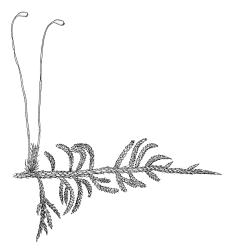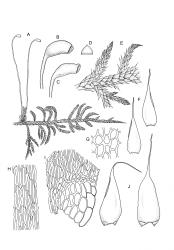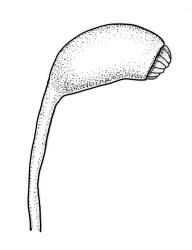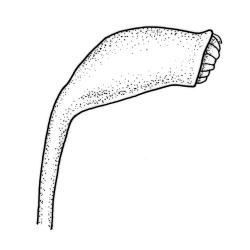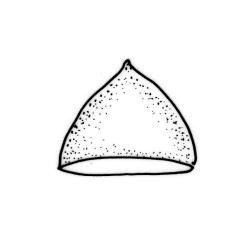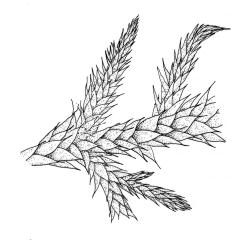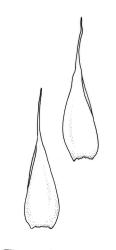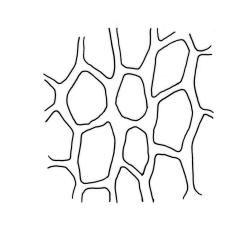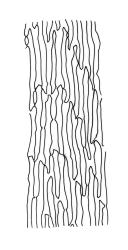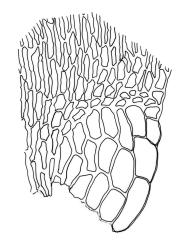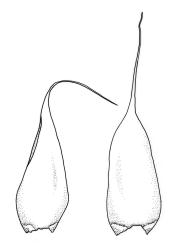The species description applies to the variety extenuata with the following exceptions:
Stems creeping, bipinnately or irregularly pinnately branched, short or elongate (up to c. 100 mm or more); branches as for species but lacking flagelliform branchlets; branch leaves ovate-lanceolate or lanceolate, sharply serrulate above by projecting cell ends (usually more serrulate than stem leaves), 1.1–1.4 × 0.25–0.35 mm.
Scott & Stone 1976, pl. 85; Beever et al. 1992, fig. 80; Ramsay et al. 2002, figs 4, a–c, g–h; figs 5–6; Meagher & Fuhrer 2003, p. 89; Malcolm & Malcolm 2003, p. 72 (all as W. extenuata).
Alpine forms of W. extenuata var. extenuata could conceivably be confused with Rhacocarpus purpurascens given their similar growth habit, branching patterns, and abruptly tapered leaves. However, the Wijkia is not a rigid plant like R. purpurascens and the delicately textured leaves here are completely different from the thick, leathery leaves with ± red hair-points of R. purpurascens. The latter has leaves that appear opaque under the compound scope and are finely and densely wrinkled except at the margins, where a border of smooth cells is visible. The alar cells of R. purpurascens are rectangular, extremely thick-walled, strongly pigmented, and highly porose. Wijkia extenuata var. extenuata usually occurs on wood, whereas R. purpurascens normally grows over rock.
NI: N Auckland, including offshore islands (LB, GB), S Auckland, Gisborne, Hawke’s Bay, Taranaki, Wellington (including KA); SI: Nelson, Marlborough, Canterbury, Westland, Otago, Southland; St; Sol; Sn; A; C. On SI exhibiting a very strong western bias in its distribution.
Australasian. Tasmania*, mainland Australia*. Reported from New Caledonia by Ramsay et al. (2002).
On decaying wood and often forming extensive interwoven mats. Also epiphytic on a wide range of native trees and tree ferns and on exposed roots; occasionally becoming pendent. Less commonly on soil or rock in forested situations and rarely as an epiphyll. It appears to be rare in areas of base-rich bedrock and is not a common plant in alpine situations. On North I. from near sea level to c. 1000 m (Ruahine Range, Hawke’s Bay L.D.) and on South I. from near sea level to c. 1400 m (Temple Basin, Canterbury L.D.). Frequent bryophyte associates include Dicranoloma robustum, D. billardierei, Distichophyllum pulchellum, Hypnum chrysogaster, Lembophyllum clandestinum, Leptotheca gaudichaudii, Leucobryum candidum, Pyrrhobryum bifarium, P. mnioides var. contortum, Rhizogonium distichum, Bazzania adnexa, and Plagiochila spp.



